Ballistic Missile Defense Intercept Flight Test Record
Overall Test Record
- 88 of 107 hit-to-kill intercept attempts have been successful across all programs since the integrated system began development in 2001
- 59 of 74 hit-to-kill intercepts for THAAD, Aegis BMD, and GMD since 2001
- Includes Aegis Ballistic Missile Defense (BMD), Ground-based Midcourse Defense (GMD), Terminal High Altitude Area Defense (THAAD), and PATRIOT Advanced Capability-3
View MDA Test Record Here
Aegis Ballistic Missile Defense Testing Record
| Interceptor | Hits | Misses | No Test Due to Target Failure | Success % | Total |
| SM-2 | 1 | 0 | 0 | 100% | 1 |
| SM-2 Block IV | 4 | 0 | 0 | 100% | 4 |
| SM-3 | 1 | 0 | 0 | 100% | 1 |
| SM-3-0 | 4 | 1 | 0 | 80% | 5 |
| SM-3 Block I | 2 | 1 | 0 | 67% | 3 |
| SM-3 Block IA | 15 | 3 | 0 | 83% | 18 |
| SM-3 Block IIA | 4 | 3 | 0 | 57% | 7 |
| SM-3 Block IB | 8 | 2 | 2 | 80% | 12 |
| SM-6 Dual I | 3 | 0 | 0 | 100% | 3 |
| SM-6 Dual II | 4 | 1 | 0 | 80% | 5 |
| Total (All Systems) | 42 | 10 | 2 | 77% | 54 |
SM-2
October 7, 2017 – The Arleigh Burke-class guided-missile destroyer USS Mitscher (DDG 57) fired Standard Missiles-2 at the incoming Mirach and Firejet anti-ship cruise missiles as part of a no-notice launch of anti-ship cruise missiles in the IAMD exercise scenario.
SM-2 Block IV
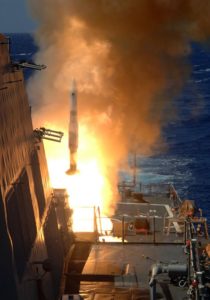
July 29, 2015 – The SM-2 Block IV was successful at intercepting a short-range ballistic missile.
March 26, 2009 – This mission was successful following the simultaneous engagement of a short-range ballistic missile in terminal phase and a cruise missile. Both targets were intercepted.
June 5, 2008 – The SM-2 Block IV successfully intercepted a terminal phase target launched from a mobile launch platform.
May 24, 2006 – This test marked the first sea-based intercept of a ballistic missile in its terminal phase by the SM-2 Block IV.
SM-3
August 31, 2007 – This test was considered a successful classified flight test.
SM-3-0
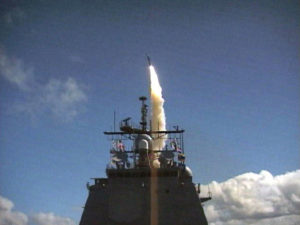
December 11, 2003 – This mission tested a new modification to the interceptor to allow it to function with reduced capability. This mission produced another successful intercept.
June 18, 2003 – This test failed when the interceptor’s divert and altitude control malfunctioned. This was the first failure of this model.
November 21, 2002 – This test was deemed a success after the missile’s Kinetic Warhead acquired, tracked, and diverted into the target. This marked the third successful intercept for the SM-3-0.
June 13, 2002 – Aegis SM-3-0 succeeded in intercepting a unitary target missile, marking the completion of the Aegis LEAP Intercept Program.
January 25, 2002 – Although this mission did not require an intercept to be successful, the interceptor still collided with the test target. It was the first successful interception of a ballistic missile fired from a sea-based platform.
SM-3 Block I
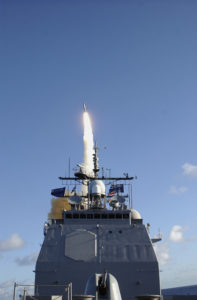
November 1, 2008 – This test had mixed results. One target was successfully intercepted, while the second one was not.
November 17, 2005 – This was the first mission to utilize a target missile with a separating warhead more closely resembling a real-world threat. The SM-3 Block I was not fooled and still managed a successful intercept.
February 24, 2005 – This flight test marked the first test of the SM-3 Block 1, which yet again demonstrated the system’s ability to destroy an enemy ballistic missile.
SM-3 Block IA
October 25, 2023 – USS Carl M Levin successfully intercepted multiple targets in an Integrated Air and Missile Defense test against two short-ranged ballistic missiles and two subsonic anti-ship cruise missiles with two SM-3 Block IAs and four SM-2 Block IIIAs
February 1, 2018 – An SM-3 Block IA was unsuccessful in hitting its target as the missile launched from Aegis Ashore test site in Hawaii.
October 20, 2015 – The SM-3 Block IA was successful at intercepting a target launched from the UK’s Hebrides Range, northwest of Scotland.
September 10, 2013 – The purpose of this test was to show that the Aegis and THAAD could work together in a layered defense system. Both intercepts proved successful.
February 12, 2013 – Using the Space Tracking Surveillance System and Launch on Remote capabilities, the interceptor successfully destroyed a medium-range ballistic missile target.
October 25, 2012 – This test failed when the interceptor suffered Inertial Measurement Unit Failure.
April 14, 2011 – This marked the first Aegis BMD successful intercept against a separating intermediate-range target. This was also the first test relying on remote tracking data.
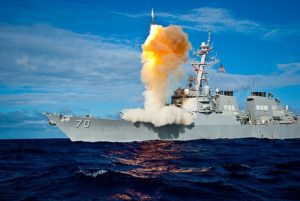
October 28, 2010 – The SM-3 Block IA successfully intercepted a target over the Pacific Ocean after developing a fire control solution.
October 27, 2009 – This test was a joint action by the US and Japan, where the Pacific Missile Range Facility fired the target and a Japanese destroyer fired the interceptor. The test produced another successful intercept.
July 30, 2009 – This test proved a success when the SM-3 Block IA intercepted a sub-scale short range ballistic missile.
November 19, 2008 – This test failed when the interceptor’s divert and altitude control malfunctioned. This was the first failure of this model.
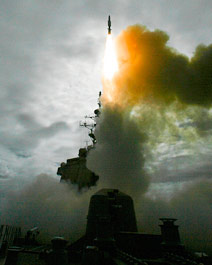
December 17, 2007 – This test provided a successful intercept by the SM-3 Block IA missile off the coast of Kauai Island. The missile intercepted a ballistic missile target outside of the atmosphere.
November 6, 2007 – This test achieved the first-ever double-interception of ballistic missile targets outside of the atmosphere.
June 22, 2007 – The SM-3 Block IA successfully performed a “hit-to-kill” intercept of a separating, medium range ballistic missile.
April 26, 2007 – This test marked the 8th successful intercept of the Aegis BMD. The SM-3 Block IA successfully tracked and intercepted a ballistic missile target.
June 22, 2006 – This was the first test of the SM-3 Block IA. This test was deemed a success after the kinetic warhead tracked and intercepted the target.
SM-3 Block IIA
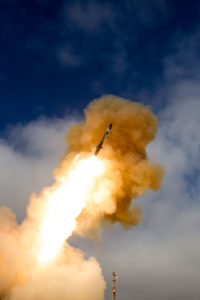
February 8, 2024 – An SM-3 Block IIA successfully intercepted a Medium Range Ballistic Missile target with countermeasures at the Pacific Missile Range Facility in Kauai, Hawaii.
November 17, 2020 – An SM-3 Block IIA was successful in its test launch of an intercept of an intercontinental ballistic missile from a Ballistic Missile Test Site in Hawaii.
December 10, 2018 – A successful intercept of an intermediate-range ballistic missile in space was conducted from the Aegis Ashore test site in Hawaii. The interceptor relied on a non-native sensor for the entire test.
October 26, 2018 – An SM-3 IIA missile was launched from the USS John Finn (DDG-113) against a medium-range ballistic missile target. The SM-3 IIA successfully intercepted the missile.
January 31, 2018 – The SM-3 Block IIA missile was launched successfully against an intermediate-range ballistic missile target, however, the interceptor did not successfully intercept or destroy the incoming missile target. While the test was deemed a failure, the MDA director believes the agency makes progress every time they conduct a test.
June 21, 2017 – During this test the SM-3 Block IIA was successful in detecting and tracking the target missile, but a successful intercept was not made. This test was deemed unsuccessful by the Missile Defense Agency and the Japan Ministry of Defense due to human error.
February 3, 2017 – This test was the first successful test of the newest version of the Standard Missile 3, the SM-3 Block IIA.
SM-3 Block IB
October 15, 2017 – During the 2017 Formidable Shield Exercise, the U.S. guided-missile destroyer USS Donald Cook successfully detected, tracked and intercepted a medium-range ballistic missile target with a Standard Missile-3 Block IB guided missile.
December 10, 2015 – This test was the first intercept flight test of a land-based Aegis Ballistic Missile Defense (BMD) weapon system and the SM-3 Block IB Threat Upgrade guided missile. This successful test proved that the Aegis BMD capabilities will soon be operational on land as well as at sea.
November 1, 2015 – The reasons behind this failure are unknown. The failure review is ongoing.
October 4, 2015 – This is considered a ‘no-test’ because the target malfunctioned and the interceptor was not launched.
June 25, 2015 – This is considered a ‘no-test’ because the target malfunctioned and the interceptor was not launched.
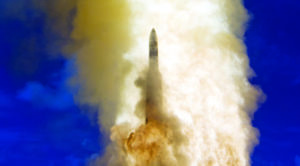
November 6, 2014 – This was marked a success when a short-range missile was successfully intercepted by the SM-3 Block IB.
October 3, 2013 – This marked the 28th successful flight test since the beginning of Aegis flight testing in 2002.
September 18, 2013 – This was a successful test that was meant to be operationally realistic. The target’s launch time and bearing were not known beforehand, but the SM-3 Block IB still made a successful intercept.
May 15, 2013 – This test was considered a success when the SM-3 Block IB intercepted a target while using an updated version of the Aegis BMD Weapons System, which would provide capability for engagement of longer-range ballistic missiles.
June 26, 2012 – This was the second consecutive successful intercept by the SM-3 Block IB.
May 9, 2012 – This marked the first successful intercept of a short-range ballistic missile target by the SM-3 Block IB.
September 1, 2011 – This test failed when the interceptor suffered third stage rocket motor pulse failure.
SM-6 Dual I
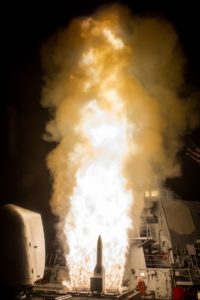
August 29, 2017 – This test marked the second time the SM-6 Dual I
intercepted a complicated medium-range ballistic missile target and was the third successful test of the SM-6.
December 14, 2016 – The second successful test of the SM-6 Dual I proved it was able to intercept a complicated medium-range ballistic missile target.
July 28, 2016 – This was the first test of the SM-6 Dual I and was successful when the missile intercepted a target in its terminal phase.
SM-6 Dual II
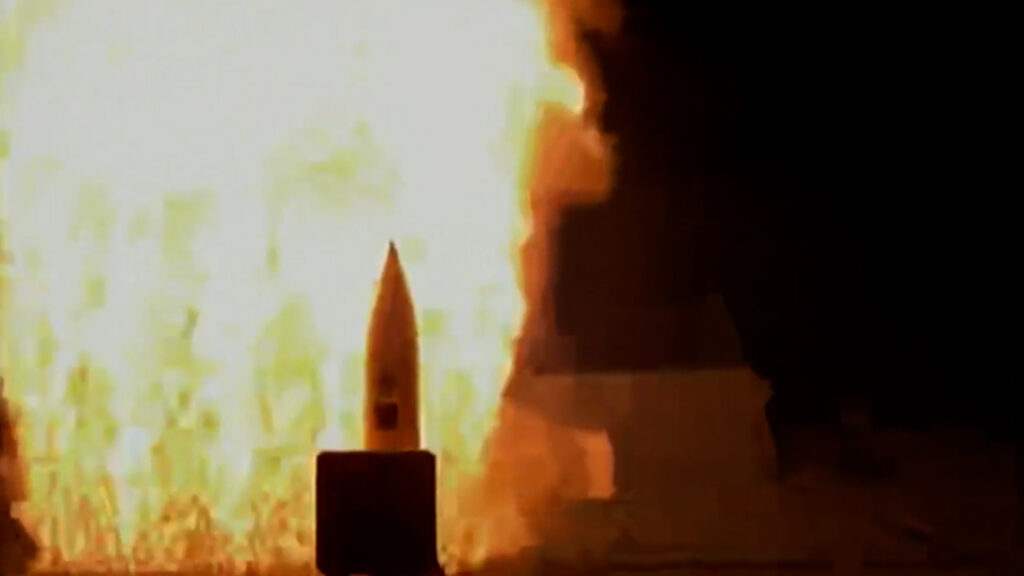
March 28, 2024 – In collaboration with Australia, an SM-6 Dual II intercepted an advanced Medium Range Ballistic Missile test target in its terminal phase.
March 30, 2023 – This third test of the SM-6 Dual II was successful in intercepting a medium-range ballistic missile in its terminal phase.
July 24, 2021 – This test of the SM-6 Dual II was to intercept two short-range ballistic missiles, the first target was intercepted. It is unclear if the second target was intercepted.
May 29, 2021 – This test demonstrated two SM-6 Dual II missiles to intercept a medium-range ballistic missile, however, an intercept was not achieved.
Terminal High Altitude Area Defense (THAAD) Testing Record
| Hits | Misses | No Test Due to Target Failure | Success % | Total | |
| THAAD Interceptor | 16 | 0 | 4 | 100% | 20 |
| Total | 16 | 0 | 4 | 100% | 20 |
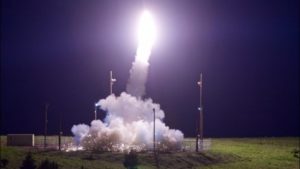
February 24, 2022 – A THAAD missile intercepted its simulated incoming target. The missile flew successfully to its intercept point and self-destructed as planned.
August 30, 2019 – A THAAD missile intercepted its target continuing its perfect intercept record.
July 30, 2017 – A THAAD missile intercepted its target continuing the perfect record for THAAD missile defense system tests.
July 11, 2017 – A THAAD missile successfully intercepted a target missile launched from an Air Force Cargo Plane north of Hawaii.
November 1, 2015 – This test provided a successful salvo/dual intercept. Both targets were intercepted and destroyed.
October 4, 2015 – This event was considered a “no-test” when the target malfunctioned after launch. The interceptor was not launched.
September 10, 2013 – This test stressed the ability for the Aegis and THAAD missile defense systems to work together. Both systems worked as planned and the test was considered a success.
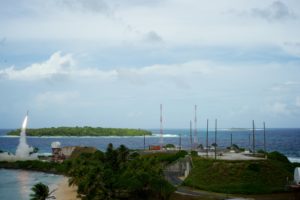
October 25, 2012 – This test marked the first time a THAAD missile successfully intercepted a Medium Range Ballistic Missile target.
October 4, 2011 – This test provided a successful salvo/dual intercept. Both targets were intercepted and destroyed.
June 28, 2010 – This test provided a successful endo-atmospheric intercept of a unitary target at lowest altitude to date.
December 11, 2009 – This event was considered a “no-test” when the target malfunctioned after launch. The interceptor was not launched.
March 17, 2009 – A THAAD missile successfully intercepted the target. This acted as a repeat of the mission that ended as a “no-test” in September 2008.
September 17, 2008 – This event was considered a “no-test” when the target malfunctioned after launch. The interceptor was not launched.
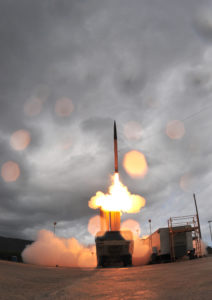
June 25, 2008 – This mission was considered a success when a THAAD missile brought down a target launched from a C-17 Globemaster III.
October 26, 2007 – This mission proved THAAD’s capability to operate in extreme environments. A THAAD missile successfully intercepted an exo-atmospheric target.
April 5, 2007 – This mission successfully tested THAAD’s interoperability with other elements of the Missile Defense System. THAAD intercepted a mid endo-atmosphere unitary target off the coast of Kauai.
January 26, 2007 – A THAAD missile intercepted a unitary target just inside earth’s atmosphere providing another successful test for this program.
September 13, 2006 – This event was considered a “no-test” when the target malfunctioned after launch. The interceptor was not launched.
July 12, 2006 – This mission was considered a success when a THAAD missile intercepted a live target.
Ground-Based Midcourse Defense (GMD) Testing Record
| Hits | Misses | No Test Due to: Target Failure | Success % | Total | |
| Ground-Based Interceptor | 12 | 8 | 1 | 57% | 21 |
| Total | 12 | 8 | 1 | 57% | 21 |
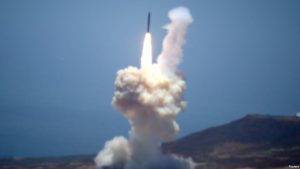
December 11, 2023 – An upgraded GBI with a Capability Enhanced-II Block 1 Exo-Atmospheric Kill Vehicle successfully intercepted an Intermediate Range Ballistic Missile.
March 25, 2019 – Two long-range Ground-based Interceptors launched from Vandenberg Air Force Base, Calif., in the first-ever salvo engagement test of a threat-representative ICBM target. The two GBIs successfully intercepted a target launched from the Ronald Reagan Ballistic Missile Defense Test Site on Kwajalein Atoll.
May 30, 2017 – This test involved the new CE-II Block-I version of the kill vehicle, which successfully intercepted a ICBM target.
June 22, 2014 – This test acted as a repeat of January and December 2010 tests, which not only provided a successful intercept, but also met the previously unmet objectives of those tests.
July 5, 2013 – This test failed when the kill vehicle and booster did not separate.
December 15, 2010 – This test failed to provide a successful intercept when the kill vehicle faced guidance errors in the final seconds of flight.
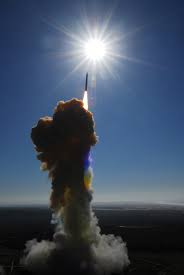
January 31, 2010 – This test failed because both the kill vehicle and the system sensor had performance issues during flight.
December 5, 2008 – This test launched both a mock warhead and an interceptor from different Air Force Bases and all components worked as designed.
September 28, 2007 – Scheduled in response to the no-test in May, this test did yield a successful intercept.
May 25, 2007 – The Missile Defense Agency considers this a ‘no-test’ because the target malfunctioned after launch and the interceptor was never launched.
September 1, 2006 – This test was the first time that operational radar was used to capture targeting information. Primarily used to collect information on the intercept and act as a radar certification, this test was considered a success.
February 14, 2005 – This intercept test was considered a failure when the interceptor did not launch after a silo support arm did not retract, triggering an automatic abort.
December 15, 2004 – This intercept test failed due to a problematic software configuration that failed to launch the interceptor.
December 11, 2002 – This intercept test failed because the kill vehicle and booster did not separate.
October 14, 2002 – Considered a successful intercept, this test was the first test to use Aegis SPY-1 radar.
March 15, 2002 – Not only was this test successful at intercepting a mock warhead, but it was also successful at ignoring two different decoys during the test.
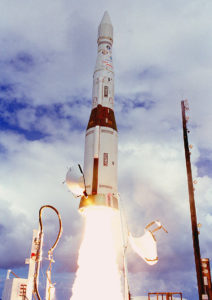
December 3, 2001 – This test was a repeat of the previous test, but used Orbital’s Target Launch Vehicle instead of Lockheed Martin’s Multi-Service Launch System. The test was successful.
July 14, 2001 – This test repeated the previous test and successfully intercepted the target according to satellite, jet, and ground station reports.
July 8, 2000 – This intercept test failed because the kill vehicle and booster did not separate.
January 19, 2000 – This intercept failed because the kill vehicle’s infrared sensor cooling malfunctioned.
October 2, 1999 – Despite an Inertial Measurement Unit malfunction, the kill vehicle was able to use a backup acquisition mode to acquire and intercept its target.
